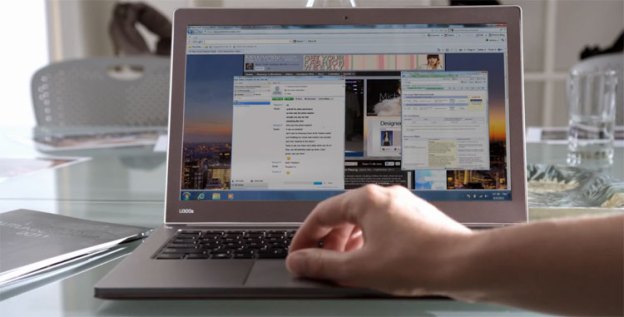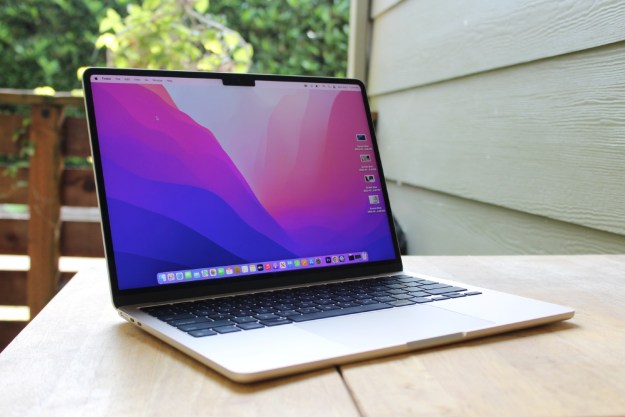
Apple casts a bigger footprint in PCs than its approximate 5-percent market share suggests. This is because it is the most profitable of the computer companies, and the most highly valued. Even without market share, those positions are highly envied by Apple’s competitors.
Steve Jobs idealistically modeled Apple after Sony, and while most copies are inferior to the original, Apple is clearly more successful than Sony. The fastest growing PC company, however, isn’t Sony or Apple (at least not in PCs). It is Lenovo, and the ThinkPad builder is getting on Intel’s Ultrabook wagon early to better challenge post-Jobs Apple.
Let’s talk about the coming wave of
Apple’s MacBook sets the bar
Apple is unique in the market in that the company builds few products, and uses marketing to drive customers to them. Steve Jobs was Apple’s focus group in that products were designed to meet his personal tastes, and this gave them a personal touch and connection to status that few other products outside of cosmetics (which use celebrities in marketing heavily) enjoy. But, even stronger than good celebrity endorsements, the Mac is (or was) truly built by and for Jobs. He isn’t, as most celebrities are, just a paid shill. That gives the line unusual power.

If you look at the design, thin is in. Apple also takes sharp control over costs, but when dollars and cents conflict with features and design, design generally wins. This allows Apple to hold onto decent volume while pretty much owning the premium position in the PC market. However, the MacBook Air product line does make tradeoffs; it is limited in both breadth and depth, like the one-size-fits-all approach most prominent in Apple’s iPad and iPhone lines.
Choices are limited by design to both maintain margins (reduce inventory levels), and to avoid confusing customers. You don’t buy a Mac for its performance (which is adequate), its durability or its security. You buy it because it is simple and it imparts status better than any other product. This is the bar that the Sony Z and the coming Intel Ultrabooks are attempting to meet. You’ll note I focused on the intangible benefits, because this is often what folks forget when they run against Apple.
The Sony Z
The Sony Z Series laptop is a typical halo product from Sony. Halo products aren’t expected to sell well; they are like show cars is to an automotive vendor : A showcase of that vendor’s capabilities. The problem with them tends to be price, as they drift to very expensive. Fully configured, the Sony Z Series comes in at around $2,000 while the comparable high-end MacBook Pro at 13 inches is $1,499. Typically Apple sets the high bar for laptop price at volume, and this is one of the reasons a halo product like the Sony Z will not sell in high volume. But the Sony is a better notebook (at that price it had better be, right?)

Where the Mac uses aluminum the Z uses carbon fiber; where the Mac has good sound, the Sony has active noise cancellation; where the Mac has a good built-in camera, the Sony has a high-end face-tracking capability. Where the Mac has good resolution (1280 x 800) the Sony has great resolution (1600 x 900), where the Mac weighs 4.5 pounds, the Sony weighs 2.5 pounds, (even with the 16-hour extended battery it is only 3.5 pounds). The Mac does have a Thunderbolt port and an optical drive built in that the Sony lacks, and has a Mini-DisplayPort jack rather than the less-flexible but more common HDMI port the Sony sports. In drives to hit price, the Mac has a magnetic 500GB drive, while the Sony has a vastly faster but smaller capacity 128GB Flash drive. The Sony has an optical drive dock and — this is unique to Sony, — the optional battery slice can be charged by itself, providing nearly unlimited off-plug power with multiple batteries. Finally the Sony has biometric security, which is generally preferred over the more common password-only protection.

In short the Sony is what you would get if you literally wanted the best of the best, and price were almost no object. But it is also,the precursor to the Ultrabooks, which are coming at more aggressive prices.
The Lenovo Ultrabooks
This week, Lenovo announced its high-end Ultrabook designs. The Ultrabook is a MacBook-targeted design class put forward by Intel earlier this year with targeted prices starting round $1,000, and having some of the same features showcased by both the Mac and the Sony Z series. The high-end product starts at $1,199 and comes with an SSD drive, while the low end starts at a more affordable $849 and doesn’t.
These products introduce Intel’s WiDi, technology which allows you to wirelessly broadcast a signal to a WiDi-equipped TV. Battery life is expected to be in line with the Macs at 6 or 7 hours. While the U300, like the Sony, leaves the drive off to get to a lighter weight, the U400 has built-in DVD-RW drive. The U400 has a dedicated (Radeon) graphics part, while the U300 uses Intel’s graphic solution. Weight is under 3 pounds, or between the Sony and Apple products.

In short, the Ultabooks will have some of the Mac advantages and some of the Sony advantages at a vastly lower price point, and they show up in November.
What’s coming
Ultrabooks are likely the next big wave in notebook computers as vendors move to create ever thinner and lighter
In the end, Apple’s offerings, the Sony Z Series, and these coming Lenovo Ultrabooks showcase the direction the market is going in, and what we’ll all mostly be using in the next 3 to 5 years. Thin is clearly in, and the coming Windows 8 launch will be surrounded by these ultrathin products.
Guest contributor Rob Enderle is the founder and principal analyst for the Enderle Group, and one of the most frequently quoted tech pundits in the world. Opinion pieces denote the opinions of the author, and do not necessarily represent the views of Digital Trends.
Editors' Recommendations
- The biggest threat to the MacBook this year might come from Apple itself
- Why you should buy a MacBook Pro instead of a MacBook Air
- Why you should buy a MacBook Air instead of a MacBook Pro
- Why gaming on the M3 MacBook Air has left me impressed
- RIP to Apple’s most important MacBook


